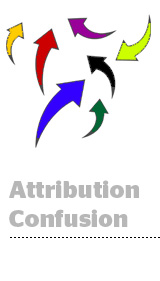 Attribution isn’t perfect. Far from it. But perfection isn’t what the industry should be aiming for.
Attribution isn’t perfect. Far from it. But perfection isn’t what the industry should be aiming for.
“If you wait for the end state, you won’t have a business for 10 years and by that time the world will have moved on,” said Pravin Chandiramani, Simulmedia’s SVP of data strategy, speaking at a measurement and attribution event on Wednesday held at Time Inc.’s offices in New York City. “Don’t let perfect get in the way of better.”
But the question remains: “Better than what?” quipped Taylor Schreiner, VP of research at Adobe-owned TubeMogul.
If you want perfect, go to academia, said Pete Doe, chief research officer at Clypd.
“Anyone working with data in this business knows how dirty it is,” Doe said.
Schreiner pointed to TV data as an example of how messy and complicated attribution can get. Television is “always going to be a hole because of the addressability question,” Schreiner said.
Most smart TVs sold after 2012 come embedded with a technology called automatic content recognition, which, privacy implications aside, harvests data on viewing habits, including OTT content, programming and advertising TV content, time of day, network, channel and duration.
While that might be better than panel-based measurement or set-top box data, it still doesn’t tell you which specific members of the household are plopped down on the sofa.
And that puts a kink into the people-based ambitions of a company like Viant, now owned by Time Inc., which acquired the ad tech company in February for its identity marketing capabilities.
Although Viant CMO Jon Schulz presented a rosy future of attribution centered around “people not proxies, wherever they are and on whatever device they happen to be on,” that’s just not where the industry’s at – at least not yet, Doe said.
“When I was at Nielsen, there was a lot of talk about doing multitouch attribution across linear TV and as many touch points as you can get, and it’s really just talk – I don’t see it going much beyond that,” said Doe, who joined Clypd in 2015 after almost a decade with Nielsen in various roles, most recently as SVP of data integration.
But even if the TV data was easily accessible, there would still be a gap, Doe said.
“If you’ve got three people watching TV, how do you know who’s watching what? That brings you to correlation, not the cause,” he said. “All of those things are neatly swept under the carpet in the shiny new world.”
The inherent challenge related to measuring TV is why attribution has mainly coalesced around digital despite the best efforts of vendors with big plans and advertisers with big asks.
“It’s a journey,” said Ravi Parmeswar, VP of global strategic insights and analytics at Johnson & Johnson, which uses Nielsen Catalina Solutions to connect media exposure to purchases as best it can. “We don’t want it to be only digital today, but that is where the big data exists. From a CPG perspective, we just don’t have enough TV in the panel to do multichannel attribution. There are not enough households.”
That’ll change, though, said Srishti Gupta, president of IRI’s Media Center of Excellence.
“We need to build to the future to where the industry is going,” she said. “If you’re building something today, it has to be cross-channel.”
This post was syndicated from Ad Exchanger.

More Stories
NBCUniversal and Jeep Rev Up a Partnership For The Real Housewives of Beverly Hills Reunion
Peter Thiel-backed AI Startup Sentient Pitches Itself More Transparent than OpenAI and Perplexity
Mark Read’s Pay Hit, DEI Silence, and Other Key Takeaways from WPP’s Annual Report